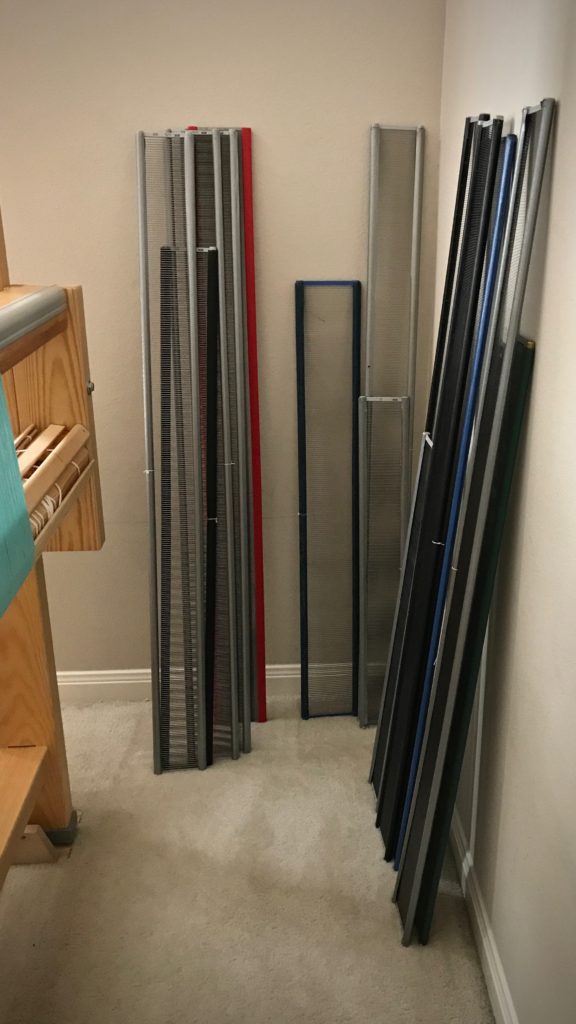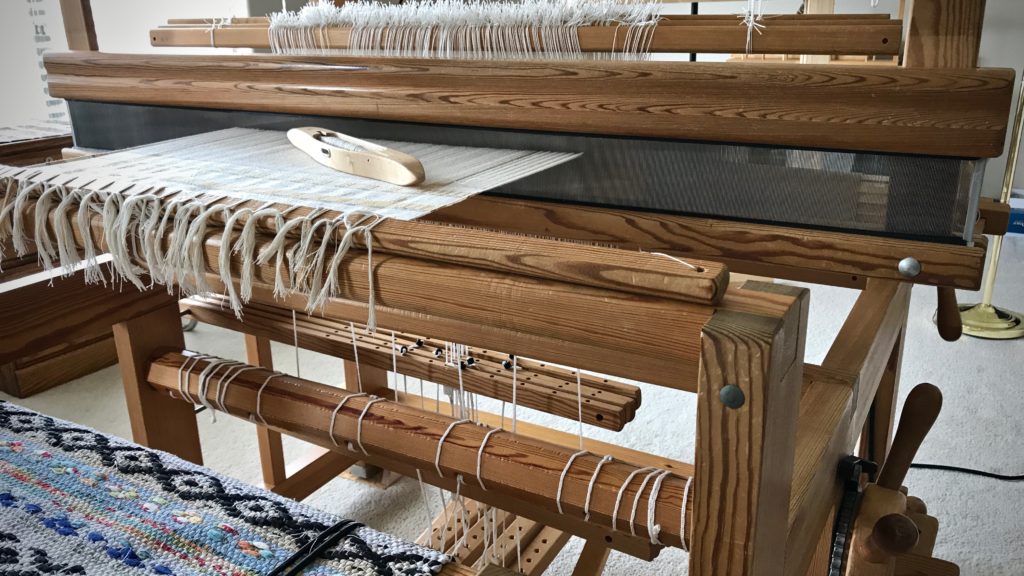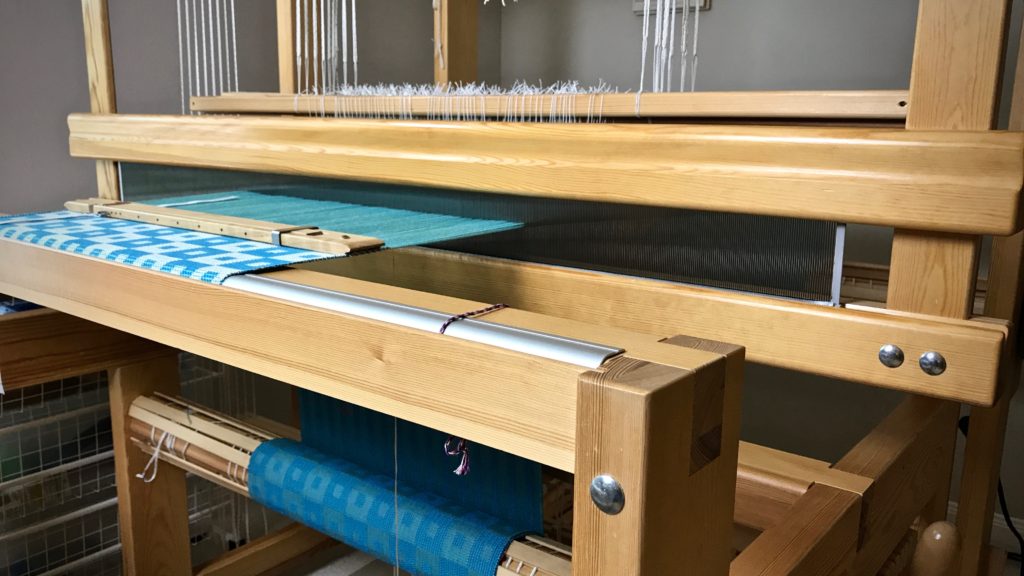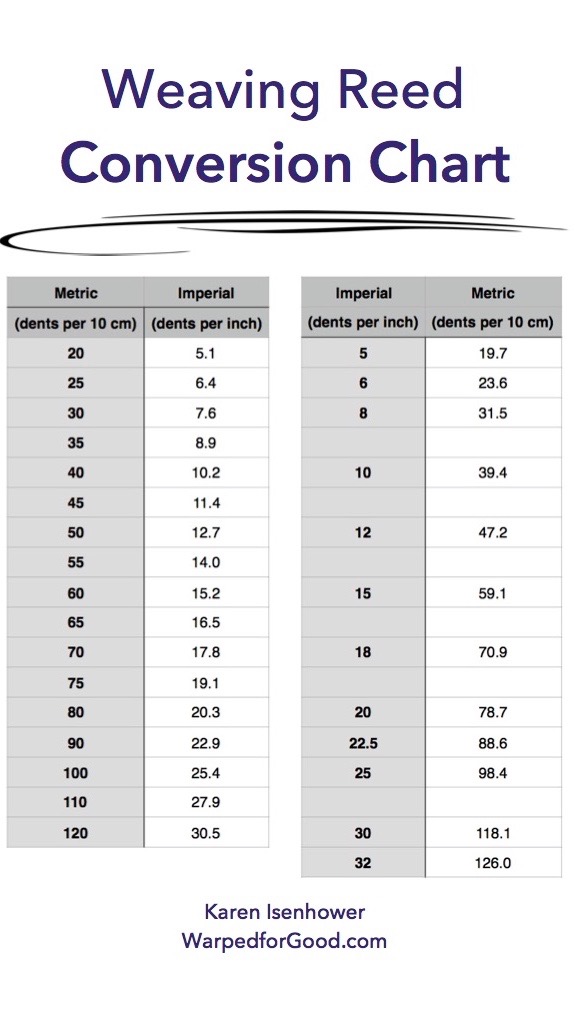Eventually, I would like to have a metric reed (or two) in every possible size. Until then, I will be happy with what I have, while I gradually add to my supply, as needed, one reed at a time.
I prefer metric reeds (dents per 10 centimeters) over imperial reeds (dents per inch). For one thing, the math is easier for project planning. And because there are smaller increments between sizes, there are more sett choices with metric reeds. It could be my imagination, but it often seems that the metric reed yields a Goldilocks “just right” sett.

My selection of reeds vary in length, from 70 cm (27″) to 120 cm (47″), to fit the weaving widths of my looms. But Glimåkra countermarch looms have beaters that are open on the sides, so I can use any length reed in any loom.

My all-around favorite reeds are those made by Glimåkra because they are lightweight and easy to handle, …and they come in metric sizes. (Of course, you need to choose reeds that work with your loom.)

I put together a reed conversion chart so that we can see our options at a glance. You never know when a new project will “require” a new metric reed!
May your next project have a Goldilocks “just right” sett.
Happy weaving,
Karen


Awesome, Karen!
I’ve recently purchased a loom made in Japan which has a metric reed. It is taking me a while to convert my calculating mind from Imperial to Metric measuring. Your conversion chart will be a tremendous help. Thank you.
Julia, Have fun with your new loom!
Happy weaving,
Karen
Thanks for the conversion chart. It will be helpful. I hope you don’t mind that I printed it out to hang on my studio bulletin board.
Jeny
Hi Jenny, I’m glad the chart is helpful for you! Please put it where you can use it. That’s what it’s there for.
Karen
Thank you for putting this together, Karen! My first loom was made in Hungary, purchased when we were posted there with the military. It came with two reeds, one of which is 65/10 cm and the other (which I’ve not used yet) I think is about 23.6/10 cm. I was ripping my hair out in December, looking for some conversion charts to assist in calculating sett for a handspun scarf. I, too, would like to print out your chart to hang on my studio bulletin board.
I was thinking this morning, just before sitting at the computer interestingly enough, that I’d like to get more metric reeds for this loom. As the reed holder is a bit of an oddball width here in North America, my choices seem limited. I must explore options further.
Hi Sandy, I searched online for a reed conversion chart, so I could link to it, and I couldn’t find one that was as complete as I wanted. So I decided to put a spreadsheet together to do the math, and create my own chart.
Please use the reed conversion chart however it serves you best.
Suppliers for metric reeds in the US are quite limited, as imperial reeds are usually the American favorites.
Happy weaving,
Karen
thanks, Karen. your chart is just what I need.
I have Metric reeds,but also like to use patterns from Handwoven magazine.
So your printed out chart will also hang in my loomroom.
Hi Shirley, That’s great! I’m glad you have a use for the chart.
Karen
Thanks so much for this Karen! I have a mixture of imperial and metric reeds and until recently I have been referring to my 1970’s Toika handbook (the one with the lady setting up the loom on a rocky Finnish beach!) which had a blurry picture of a reed conversion chart. Thank you!
Hi Louise, I’m happy it helps you!
All the best,
Karen